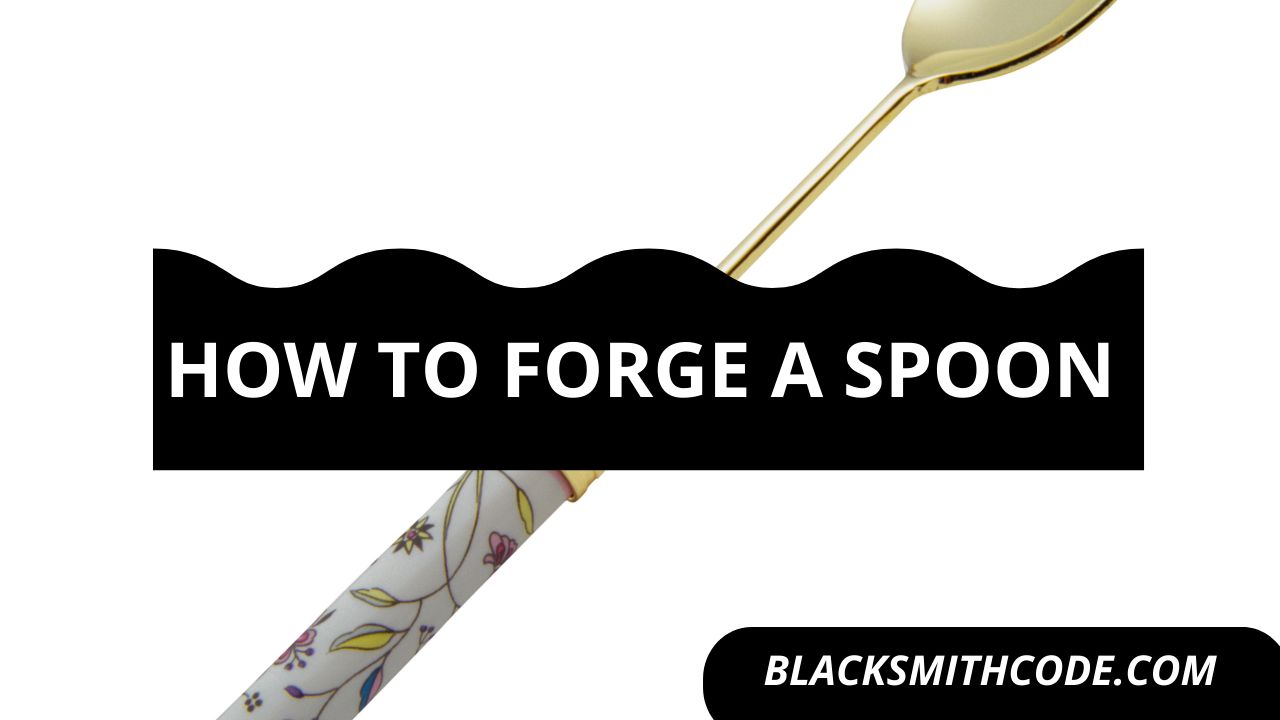Learning how to forge a spoon gives commercial and personal value. Could you have thought that forging a spoon is one of the most straightforward blacksmithing processes? That’s precisely how it is. A spoon is one of the essential materials at home. It comes in various sizes and shapes.
It is useful both at home, restaurants, and anywhere you find yourself. As long as you eat, there are high chances that you would make use of a spoon.
Blacksmiths are capable of creating anything with metal, and spoons are not exceptions to this.
Therefore, you can learn the forging process in a few easy steps. Here are concise steps that can help you through the process of forging a spoon with ease.
Instructions on how to forge a spoon
Step 1: Gather Your Materials
Before you proceed with the forging process, it is essential to have all the tools and materials around you. Keep these materials at proximity in an organized manner.
Step 2: Cutting
Cutting helps you with the precise measurement for your spoon. You can either heat and cut the metal or saw it. However, heat-cutting is mostly preferred because it preserves your materials, unlike sawing.
Likewise, hot-cutting is easier and faster than sawing. Regardless of the method, you intend to use, ensure that you are getting a neat cut. You use a hand saw for sawing and either chisel or other heat-cutting hardy tools for heat-cutting.
Pro tip
- If you cannot peel the glue away, try using a spatula, or spoon handle over the area to help lift it up.
- Note that you may need to make several attempts before having success.
- You might also try using lemon juice instead of water, or a mixture made of one part lemon juice and one part water. The acid in the juice can help eat away at the glue.
Step 3: Upsetting
This step is to prepare the metal for the rest of the process. This step will ease the process of making the spoon bowl. Upsetting will also help you to get the actual width and length of the spoon.
If you carry out your upsetting correctly, it will also ease the rest of the process. You can carry out the upsetting process in two ways:
Pro Tip
- Hold the hot end of the metal and work on it against the surface of the anvil. Then, strike the other end of the metal with your hammer.
- You can hit the hot end of the metal directly by clamping the work on the vice.
Step 4: Flatten The Handle
Now, it’s time to forge the spoon’s handle. It also presents you the opportunity to increase or shorten the length of the handle. You can also make the grip fuller. You will also get the chance to work better on the metal.
Step 5: Drawing
Drawing down the handle is the next step. This drawing will help you define the handle more clearly. Drawing the handle is dependent on the type of spoon you want to create. However, ensure that you only start pulling the handle from the region bellow that you upset.
Step 6: Form The Bowl
Once you are drawing the handle, it is time to form the bowl. You can create the container by following these easy steps.
Steps to create the bowl
- Further widen and thin the end of the bar with the use of the peen of a cross peen hammer. This action will create grooves on the metal.
- Use the flat face of your hammer to level up the grooves.
- You can repeat the process until you have a perfect shape.
Note: You are only working on one side of the metal. Likewise, know that you have to form your bowl relative to the handle. - Lower the depth of the spoon until you have your desired depth.
- Swage the block.
- Now, sink the bowl in the smaller spoon die with the use of a ball-peen hammer.
Step 7: Finishing
After the sixth step, you expect to have the perfect spoon shape. Now, it’s time to perfect your work. You finish the handle and the bowl to give a clean job.
The type of finishing is mainly dependent on your choice. For the handle, you can twist it or employ other similar designs. Polishing is also part of the finishing process.
Pro Tip
However, it would help if you were cautious while carrying out your finishing. It would be best if you were careful not to crack or distort your spoon during finishing. It is particularly essential if your finishing requires heating and tempering.
FAQs
Question
What size of a spoon can I forge?
There is no limitation to the size of the spoon you can forge. As long as you have the right materials and tools, you are good to go. The size of the spoon you would form is solely dependent on your choice. The measurement and cutting you make is the primary determinant of the size of the spoon you will get at the end.
Question
Can also forge a fork like a spoon?
One key thing to note is that you can forge any material as long as it is made of metal. The process involved in forming a fork in not entirely the same as that of a spoon. Nevertheless, all you have to do to forge a fork is to learn the primary process and get the right tools and materials.
Question
What type of materials can you use to forge spoon?
There are varieties of materials that are suitable for the forging spoon. However, the most common types of the spoon are the metallic and silver spoon. There is also a wooden and golden spoon, but they are less common.
Video on how to forge a spoon
Warnings
You should be cautious of individual factors and take certain precautions while forging your spoon. These precautions include;
- Ensure that you only heat the metal to the appropriate temperature
- Be careful not to damage your spoon during finishing.
- Use only a suitable hammer for the process.
- Ensure that you use protective gear and follow the basic blacksmithing precautionary measures.





